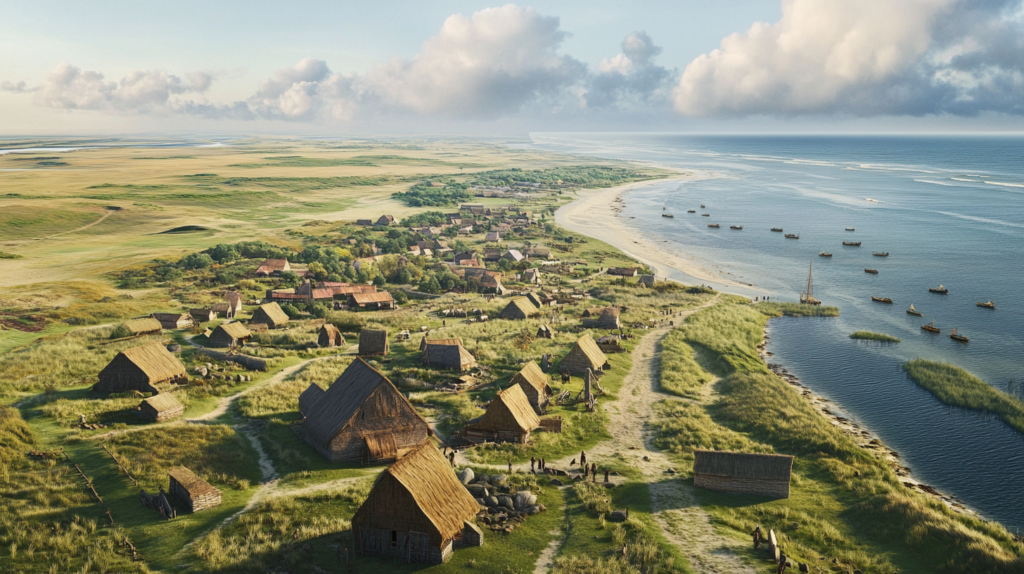
Jylland’s Early History” (Circa 400-600 AD)
Archaeological and Religious Context:
- The period between 400-600 AD in Jylland (Jutland) is marked by numerous valuable gold finds, suggesting a thriving population rather than a decline.
- Little is known about the religious practices of the 4th and 5th centuries. Many gold rings found in bogs are likely offerings to deities, but the specific Gods worshipped remain unclear. The figures of Odin, Frej, and Tor are suggested, but there is no concrete evidence to confirm their worship during this time.
- The transition from older Germanic deities (like Tyr and Nerthus) to the Norse gods (like Odin) is plausible but not yet proven.
Skjoldung Dynasty and Lejre:
- The Skjoldung dynasty, a legendary royal family, is traditionally associated with Lejre, a site near Roskilde. Archaeological excavations in Lejre have revealed significant findings from the Viking Age (8th century onwards), but nothing from the 5th century, leaving the earlier Skjoldung period somewhat mythical.
- The oldest literary sources mentioning the Skjoldungs are the Old English poem Beowulf (8th century) and later Danish historian Saxo Grammaticus. However, no archaeological evidence supports the existence of the Skjoldungs in Lejre during the 5th century.
Migration Period and the Jutes:
- The Venerable Bede, an English monk from the 8th century, wrote about the Anglo-Saxon conquest of England, attributing it to three Germanic tribes: the Saxons, Angles, and Jutes. The Jutes, according to Bede, settled in Kent, the Isle of Wight, and parts of Hampshire.
- However, there is no archaeological evidence linking the Jutes of Jylland to those in England. Some scholars suggest that the Jutes who migrated to England may have come from the Frisian coast rather than Jylland.
- The Angles, on the other hand, are believed to have migrated from the region of Angel in Southern Jylland.
The Danes and Their Expansion:
- The Danes are believed to have established a foothold in Jylland during the early Germanic Iron Age. Literary sources, such as the Byzantine historian Procopius, mention that the Heruli tribe traveled to the North to fetch a king, possibly indicating Danish influence.
- Frankish sources also report Danish raids in Frisia during the 6th century, suggesting that the Danes were active in the region and likely had a base in Jylland or Schleswig.
- While there is evidence of battles in Eastern Jylland and Funen during this period, there are no grave finds that clearly identify the victors or the ruling powers.
Conclusion:
- The period between 400-600 AD in Jylland is characterized by significant cultural and political changes, with the possible rise of the Danes and the migration of tribes like the Jutes and Angles. However, much of this history remains speculative due to the lack of concrete archaeological evidence.
This summary captures the key points of the document, focusing on the archaeological findings, religious practices, and the migration and expansion of tribes during the early history of Jylland.